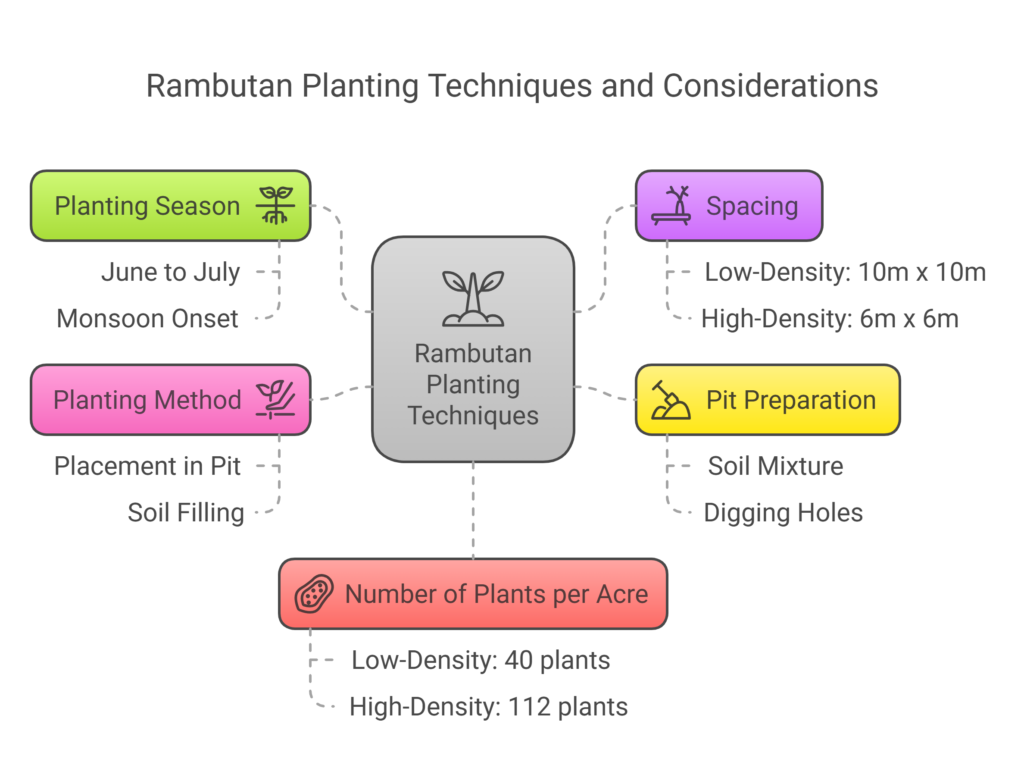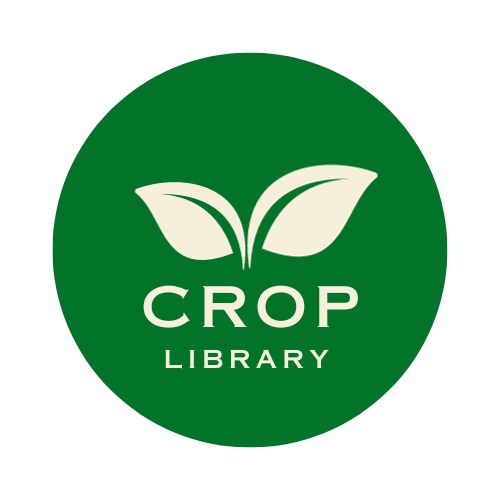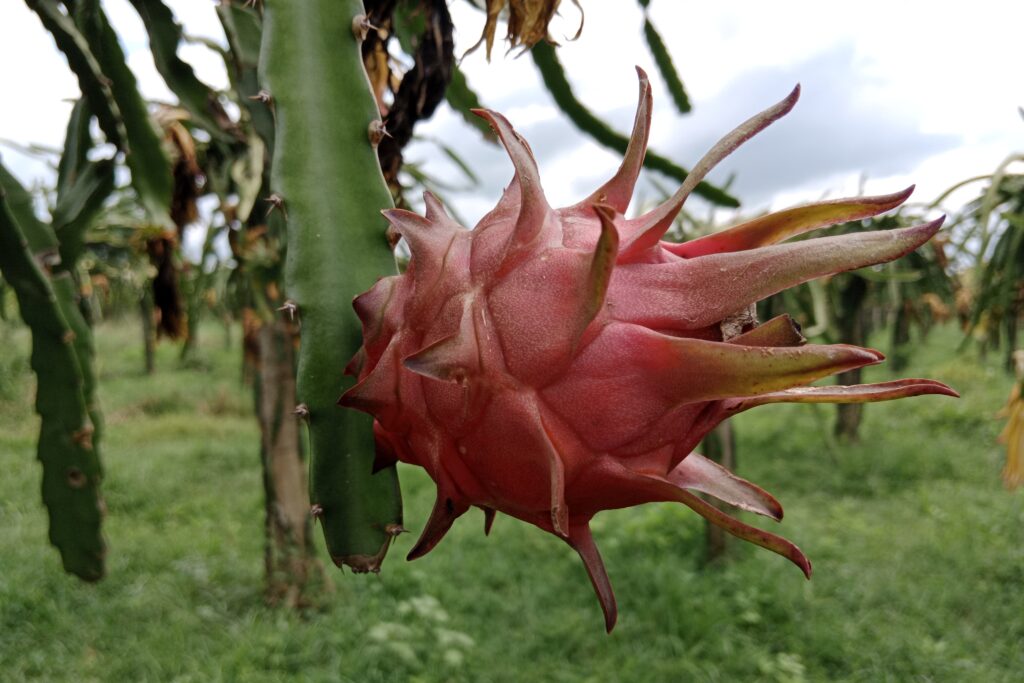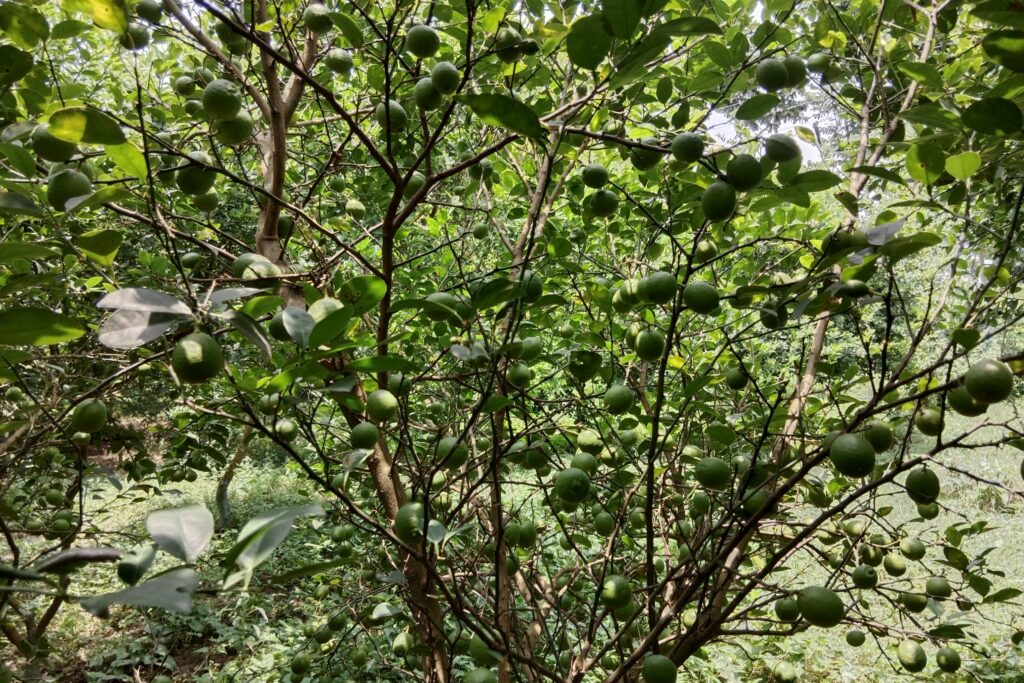Rambutan Farming
Rambutan (Nephelium lappaceum), a tropical fruit tree native to Southeast Asia, is cherished for its sweet, juicy aril encased in a hairy rind. Successful rambutan farming relies on proper land preparation, suitable soil and climate, good planting practices, and effective maintenance. The fruit, resembling lychee, has red, pink, or yellow hairy skin and contains juicy, sweet, or slightly acidic flesh, rich in sugar, vitamin C, and minerals, making it ideal for fresh consumption or processing into jams, jellies, and concentrates.
Concerning rambutan farming profit per acre, both low- and high-density systems reach their break-even point by Year 5, with high-density farming slightly delayed due to higher initial costs. Over 15 years, low-density farming achieves a net profit of NPR 5,118,000 from an income of NPR 6,840,000, while high-density farming yields a net profit of NPR 9,545,400 from an income of NPR 11,424,000—86% higher.
Despite the higher short-term profits, high-density farming’s productivity ends around 16 due to overcrowding, whereas low-density farming continues beyond Year 20, adding NPR 1.8 million in long-term profits. While high-density farming carries greater disease risks from crowding and demands stringent management, low-density farming provides more sustainability and long-term stability, making it the preferred choice for growers focused on extended profitability.
Land Preparation
Effective land preparation for rambutan cultivation begins with thorough clearing of weeds, bushes, and debris, followed by deep plowing (30-45 cm) and harrowing to break soil clods and improve aeration for optimal root development. The field should then be carefully leveled to prevent waterlogging, with particular attention to creating proper drainage channels since rambutan trees are highly sensitive to waterlogged conditions.
Soil Type
Deep, well-drained loamy or sandy loam soils with a high organic matter content are ideal for rambutan growth, which prefers a pH range of 5.5 to 6.5 that is slightly acidic to neutral. Farmers should steer clear of thick clay or poorly drained soils in particular since these wet conditions cause root rot and negatively affect the productivity and health of trees.
Climatic Requirements
Rambutan thrives in tropical climates with consistent temperatures between 22-30°C, being highly sensitive to frost and temperatures below 10°C. The crop requires substantial annual rainfall (2000-3000 mm) evenly distributed throughout the year, along with high humidity levels of 75-80%, and performs best at elevations below 600 meters above sea level for optimal growth and fruit production.
Major Cultivars
Popular rambutan varieties include:

a). Rongrien
The Rongrien variety, originating from Thailand, is prized for its exceptionally sweet fruit profile and reliably high yields, making it one of the most commercially desirable rambutan cultivars for both domestic markets and export-oriented production.
b). Binjai
The Binjai cultivar, native to Indonesia, is particularly valued for its exceptionally large and juicy fruits, making it a premium choice for fresh fruit markets and a favorite among consumers who prefer superior eating quality in rambutans.
c). Lebak Bulus
The Lebak Bulus variety from Malaysia stands out for its vibrant bright red skin and delightfully sweet flesh, making it both visually appealing and highly palatable – characteristics that have established its popularity in both local markets and international exports.
d). Seematjan
“The Seematjan variety from Indonesia produces smaller-sized fruits that compensate with intense sweetness, making this cultivar particularly prized for processing into premium desserts and sweetened products where concentrated flavor is valued over size.
e). Chompu
“The Chompu variety from Thailand is easily recognizable by its distinctive, pink-colored skin and notably sparse hair coverage, offering a unique visual appeal that differentiates it from traditional red rambutan varieties in both fresh markets and culinary presentations.
f). Silengkeng
The Silengkeng variety from the Philippines is renowned for its remarkable lychee-like flavor profile, offering a familiar yet distinctive tropical taste that bridges consumer preferences between these two popular fruits in both fresh consumption and beverage applications.
Planting

a). Planting Season
“The ideal planting season for rambutan falls between June and July, coinciding with the monsoon onset, as this timing ensures seedlings establish strong root systems while benefiting from consistent rainfall throughout their critical early growth phase, while also taking advantage of the full rainy season’s natural irrigation to optimize plant establishment.
b). Spacing
Rambutan spacing requirements vary significantly between planting systems, with low-density arrangements needing 10m x 10m spacing to accommodate the trees’ expansive mature canopies, while high-density plantings can utilize tighter 6m x 6m spacing when combined with regular pruning to manage canopy size and maintain optimal productivity.
c). Pit Preparation
Proper pit preparation involves digging 1m³ planting holes (1m × 1m × 1m) 2-4 weeks before transplantation to allow for soil conditioning, with each pit requiring a carefully blended mixture of topsoil combined with 10-15 kg of decomposed manure, 200g SSP (Single Super Phosphate), 50g Trichoderma viride, and 100g neem cake to create an optimal growth environment for young rambutan saplings.
d). Planting Method
Planting rambutan seedlings properly involves placing the sapling in the middle of the pit that has been created, then filling it in with the enriched soil mixture and gently pressing it down to remove any air pockets. Water well after planting to maintain root contact and settle the soil, then place a strong stake next to the young plant to support it from the wind and encourage upright growth while it is being established.
e). Number of Plants per Acre
“Rambutan planting density varies significantly between cultivation systems, with low-density planting accommodating approximately 40 plants per acre to allow for expansive canopy growth, while high-density systems can support up to 112 plants per acre through intensive management practices that optimize space utilization and yield potential within the same land area.
Intercropping
During the first 3-4 years before rambutan canopy development, farmers can optimize land use by intercropping with nitrogen-fixing legumes (beans, peas), short-cycle vegetables (chili, eggplant), or temporary shade providers like banana/papaya that offer additional income, while avoiding aggressive competitors such as maize or sugarcane whose invasive root systems and high nutrient requirements would hinder young rambutan growth.
Irrigation
Rambutan irrigation requirements vary by growth stage – young saplings need frequent watering (2-3 times weekly for the first two years) to establish roots, while mature trees primarily require irrigation during drought periods, particularly at critical flowering and fruiting phases. Drip systems are recommended for efficient water delivery and conservation, though careful moisture monitoring is essential as overwatering promotes root rot and fungal diseases in this sensitive crop.
Fertilizer and Manure
| Growth Stage | Fertilizer Application (Per Tree) | Frequency | Additional Notes |
| Year 1 | 50g Urea + 50g SSP + 50g MOP | Every 2 months | Balanced early nutrition for root/sapling growth. |
| Years 2–3 | 200g Urea + 300g SSP + 200g MOP | Split into 3 applications/year | Supports canopy and structural development. |
| Mature Trees (4+ years) | 1 kg NPK (10:10:10) + 20–30 kg well-rotted manure | Annually | Adjust based on soil tests and yield performance. |
| Micronutrients | Zinc & Boron (if deficiency symptoms appear) | As needed | Address leaf yellowing/poor fruiting. |
Weed Control
Weed control in plantations involves a combination of methods to ensure healthy plant growth. Organic mulching using materials like dry leaves or straw is effective in suppressing weed growth while helping retain soil moisture. Around young plants, manual weeding is essential to prevent competition for nutrients. Chemical control, such as the careful application of glyphosate, can be used sparingly; however, it’s important to avoid any contact with tree trunks to prevent damage.
Pest and Disease Management
Common Pests
Rambutan fruit and tree foliage can also be damaged by insects such as castor oil looper, swarming leaf beetles, swarming weevils, plant hoppers, red-banded thrips, false spider mites, mealy bugs and scale. Two new pests of economic importance (fruit borer: Conogethes punctiferalis and fruit webber: Eublemma anguilifera) have been identified from the rambutan

a). Fruit Borer
This serious cacao pest also attacks rambutan. Eggs are laid on the fruit, hatching in a week. Larvae burrow inside, feeding on the rind, aril, and sometimes seed, leaving behind larval exudates. Infestation worsens as fruits ripen.
Control
Spray 0.1% trichlorphon, carbaryl, or pyrethrins every 14 days until harvest. Wait at least 2 weeks after the last spray before consumption.
b). Mealybugs & Scales
Mealybugs (Planococcus citri/lilacinus) infest rambutan in the Philippines. Young nymphs feed on fruit sap, while adults secrete a white, floury coating that later turns black from sooty mold (Meliola nephelii).
Control
- Cultural methods (e.g., pruning, sanitation).
- Chemical control (white oil emulsion, lime-sulfur) to manage ants, which spread mealybugs.
c). Mites
These tiny pests (green/red mites) cause yellow spotting on both leaf surfaces. Severe infestations lead to:
- Leaf discoloration (reddening)
- Premature leaf drop
- Reduced fruit set (when inflorescences are affected)
Control: Apply dimethoate spray only for heavy infestations.
d). Leaf eating caterpillar
A major rambutan pest that damages foliage at all growth stages:
- Young caterpillars consume tender leaves and shoots
- Mature larvae feed on both young and mature leaves
Control: Apply malathion, carbaryl, or pyrethrin insecticides when infestations occur.
e). Thrips
Damage Symptoms:
- Stunted young shoots
- Curled leaflets
- Flower drop (reducing fruit set)
- Brown, deformed spinterns on young fruits
Peak Activity: Early dry season
Control
Apply inflorescence-safe systemic insecticides
Common Diseases

a). Anthracnose
Dark, sunken lesions on fruits and leaves are the result of this fungal disease, which can be prevented by spraying copper-based fungicides before and after pruning, removing and destroying infected plant parts to stop the spread, keeping the orchard clean, and avoiding crowding to reduce humidity around plants.
Management
Apply copper-based fungicides.
b). Vein Necrosis (Xanthomonas nepheliae Barr.)
Symptoms:
- Dark necrotic veins and angular leaf spots
- Premature leaf drying and defoliation
- Young leaves/buds most vulnerable
Epidemiology:
- Disease outbreaks occur during wet seasons
Management:
- Remove and burn infected trees immediately
c). Powdery Mildew
Susceptibility
- Primarily affects young leaves, flowers, and developing fruits
Symptoms
- White-yellow powdery coating on leaves/inflorescences
- Flower drop
- Stunted, brown spinterns on fruits (remain attached)
Management
- Improve air/sunlight penetration (pruning, weed control)
- Apply benomyl or mancozeb fungicides early
- Apply sulfur-based fungicides.
d). Sooty Mould (Meliola nephelii)
A secondary fungal infection following insect infestation (mealybugs, scales, mites). Wind-borne spores colonize honeydew secretions, forming black sooty coatings on leaves/fruits. While internal fruit quality remains unaffected, market value declines due to poor appearance.
Control
- Preventive: Cultural practices to minimize insect populations
- Chemical: Apply carbaryl + mineral oil for insects, supplemented with benomyl for fungal control.
e). Leaf Spot (Phomopsis sp.)
Symptoms:
- Yellow-margined necrotic spots progressing to brown lesions
- Primarily affects older, lower leaves
Management
- Apply mancozeb fungicide sprays
Harvesting
Rambutan trees, particularly grafted ones, begin fruiting four years after planting, with the peak harvesting season typically occurring between June and September, depending on the region. Harvesting is signaled by a change in fruit color from green to red or yellow and the softening of spines, which become easy to bend. Using sharp secateurs, fruit clusters should be carefully cut to prevent bruising. Young trees yield approximately 50–100 kg of fruit per tree, while mature trees produce 200–300 kg, making proper handling and harvesting techniques essential for maximizing yield and preserving fruit quality.
Cost of Investment for Rambutan Farming per Acre
Cost Breakdown per Acre (NPR)
| S.N. | Categories | Low Density | High Density |
| 1 | Land Preparation | 40,000 | 50,000 |
| 2 | Rambutan Saplings | 12,000 | 33,600 |
| 3 | Fertilizers & Manure | 15,000 | 40,000 |
| 4 | Drip Irrigation Setup | 75,000 | 150,000 |
| 5 | Labor (Planting/Maintenance) | 30,000 | 40,000 |
| 6 | Pest & Disease Control | 25,000 | 35,000 |
| 7 | Miscellaneous (Equipment, Mulch, etc.) | 25,000 | 30,000 |
| Total Initial Investment | 222,000 | 378,600 |
Annual Maintenance Cost Per Acre
From the second year onward, the annual maintenance cost for rambutan farming is approximately NPR 100,000–150,000 per acre, covering expenses such as labor, fertilizers, pest control, irrigation upkeep, and general farm management to ensure healthy tree growth and optimal fruit production.
Income from One Acre of Rambutan Farming
| Year | Low Density Yield | High Density Yield | Income Low Density Planting | Income High Density Planting |
| Year 4 | 600 kg | 1,120 kg | 120,000 | 224,000 |
| Year 5 | 1,200 kg | 2,240 kg | 240,000 | 448,000 |
| Years 6–15 | 3,000 kg/year | 5,040 kg/year | 600,000 / year | 1,008,000 / year |
| Year 16+ | 2,000 kg/year | N/A | 600,000 / year | 0 |
Analysis of Rambutan Farming Profit Per Acre
a). Break-Even Point
Both low and high-density rambutan farming systems reach their break-even point in Year 5 when net profits turn positive, though high-density planting experiences a slightly delayed breakeven due to its significantly higher initial investment costs compared to the more economical low-density approach.
b). Lifetime Profit (15 Years)
i). Low Density
Low-density rambutan cultivation yields a total income of NPR 6,840,000 from years 4 to 15, with cumulative costs of NPR 1,722,000 (comprising the initial NPR 222,000 set up plus NPR 125,000 annual maintenance over 12 years), delivering a steady net profit of approximately NPR 5,118,000 during this 12-year production period.
ii). High Density
High-density rambutan farming generates a total income of NPR 11,424,000 from years 4 to 15, with cumulative costs of NPR 1,878,600 (including the initial NPR 378,600 investment plus annual NPR 125,000 maintenance costs over 12 years), resulting in substantial net profits of approximately NPR 9,545,400 during this productive period.
c). Long-Term Viability
While high-density rambutan farming delivers 86% greater profits by year 15, its productive lifespan typically ends at year 16 due to overcrowding effects. In contrast, low-density plantings maintain production beyond year 20, generating approximately NPR 1.8 million in additional long-term profits through extended harvests, making it the superior choice for growers prioritizing sustainability over short-term gains.
d). Risk Factors
High-density rambutan farming carries higher risks due to increased disease susceptibility from crowding, requiring strict pest and disease management, while low-density planting offers greater sustainability and lower risk over the long term, making it a more stable choice for extended cultivation.
Recommendation
For optimal rambutan farming outcomes, high-density planting is recommended for growers capable of managing intensive labor and disease control requirements while targeting short-term (10-15 year) profit maximization. Alternatively, low-density cultivation better suits farmers prioritizing lower maintenance needs and long-term (20+ year) production stability, offering a more sustainable approach with reduced operational complexity.


